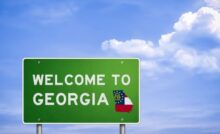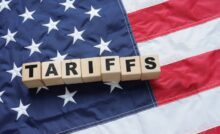Tax Treatment of DOE Energy Rebates


The Department of Treasury and the Internal Revenue Service have released Announcement 2024-19, which provides detailed guidance on the federal tax implications of rebates under the Department of Energy (DOE) home energy rebate programs. These programs are funded through the Inflation Reduction Act of 2022 and are designed to promote the adoption of energy-efficient technologies in residential settings. This announcement is crucial for homeowners and industry professionals, helping them understand how these rebates integrate into the broader federal tax system. To help clients, prospects, and others, Wilson Lewis has summarized the key details below.
Background on DOE Home Energy Rebate Programs
The DOE Home Energy Rebate Programs were launched to promote widespread energy-saving retrofits and high-efficiency home electrification projects, contributing to national energy efficiency and environmental sustainability goals.
Eligible improvements under these programs include installing advanced insulation, energy-efficient windows, and modernized HVAC systems to decrease overall energy use. Additionally, electrification projects may involve replacing traditional gas-powered appliances with electric alternatives such as heat pumps, water heaters, and induction stoves, which smart home technologies and renewable energy systems like solar panels can complement.
Key Guidelines from Announcement 2024-19
Announcement 2024-19 provides crucial guidelines on the tax treatment of rebates issued under the DOE Home Energy Rebate Programs to individual purchasers. The IRS clarifies several key aspects of how these rebates interact with federal tax obligations:
- Rebates Excluded from Purchasers’ Gross Income: The IRS categorizes these rebates as adjustments to a property’s purchase price rather than taxable income. This classification has significant implications for recipients: if a rebate is received at the time of purchase or is issued retroactively, it does not need to be reported as income on tax returns. This approach aligns with past rulings where similar incentives were not considered part of a taxpayer’s gross income, thus providing a precedent for excluding these energy rebate amounts from taxable calculations.
- Required Adjustments to Purchasers’ Basis in Property: A key financial aspect influenced by the rebates is the purchaser’s cost basis. The cost basis is initially what the purchaser paid for the property, which includes the purchase price and all associated costs such as installation fees. When a rebate is applied, it reduces this cost basis. For example, if a homeowner purchases a new energy-efficient HVAC system for $5,000 and receives a $1,000 rebate, the cost basis for tax purposes would be adjusted to $4,000. This adjusted basis will be crucial when calculating capital gains or losses if the property is later sold, potentially affecting the taxes owed at the time of sale.
- No Information Reporting Required for Rebates: The IRS stipulates that these rebates are exempt from the information reporting requirements typically mandated under Section 6041. This exemption is significant as it relieves both the rebate issuer and the recipient from filing additional forms with the IRS. This decision drastically reduces the administrative burden and potential for confusion concerning what needs to be reported. This simplification helps ensure that the benefits of the rebates are maximized without adding undue paperwork or compliance challenges.
Interaction with Section 25C Tax Credit
The guidance clarifies how these rebates affect the Section 25C tax credit for energy-efficient home improvements. The credit allows up to 30% of the cost of qualified improvements but is subject to an annual cap of $1,200, with an additional $2,000 for certain high-value improvements. When rebates are received, they must be subtracted from the total eligible expenditures for the credit. For example, a $100 rebate on a $400 expense reduces the eligible amount for the Section 25C credit to $300, potentially lowering the credit to $90 from $120.
A pro rata allocation of the rebates may be necessary for comprehensive projects that qualify for both DOE rebates and Section 25C credit. For instance, a $2,000 rebate on a total project cost of $5,000 could be allocated proportionally, affecting the calculation of eligible costs.
Additional Considerations
While rebates received by consumers are not taxable, the situation differs for business taxpayers, such as contractors. These entities must include rebates in their gross income and are subject to the usual tax reporting requirements if the amounts are $600 or more and not solely attributable to the sale of goods.
Contact Us
Navigating the intricacies of these new tax guidelines is essential to both individual and business taxpayers. Consulting with a tax professional is highly recommended to ensure compliance and maximize the benefits of these energy-efficient incentives. If you have questions about the information outlined above or need assistance with another tax or accounting issue, Wilson Lewis can help. For additional information, call 770-476-1004 or click here to contact us. We look forward to speaking with you soon.
Recent Posts
Relief on Tap for Georgia Taxpayers
Earlier this month Georgia Governor Brian Kemp signed two important parcels of legislation into law.…
Preparing for an ERISA Audit
Preparing for an ERISA plan audit often starts with understanding what the audit looks for…
Auto Dealership Benchmarking
Atlanta car dealerships are constantly searching for ways to increase new and used car sales.…
Navigating New Auto Tariffs: What Dealerships Need to Know
On April 3, 2025, a new 25% tariff on imported vehicles went into effect, bringing…
Leukemia & Lymphoma Society Fundraiser
I want you to imagine hearing the three words, “You have cancer.” Sadly, this has…
Wilson Lewis Named a Regional Leader by Accounting Today
Atlanta accounting and advisory firm Wilson Lewis was honored this month as one the top…


